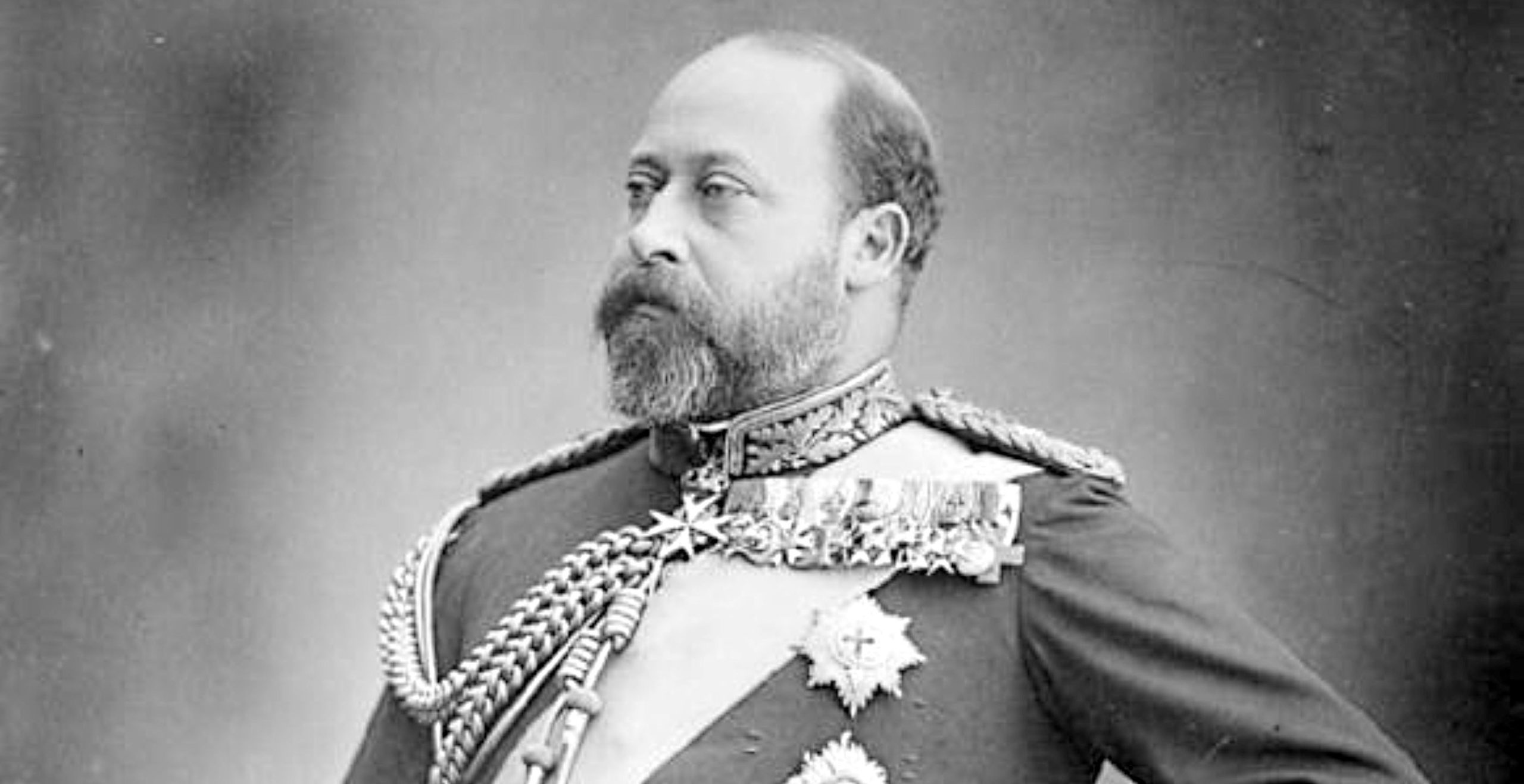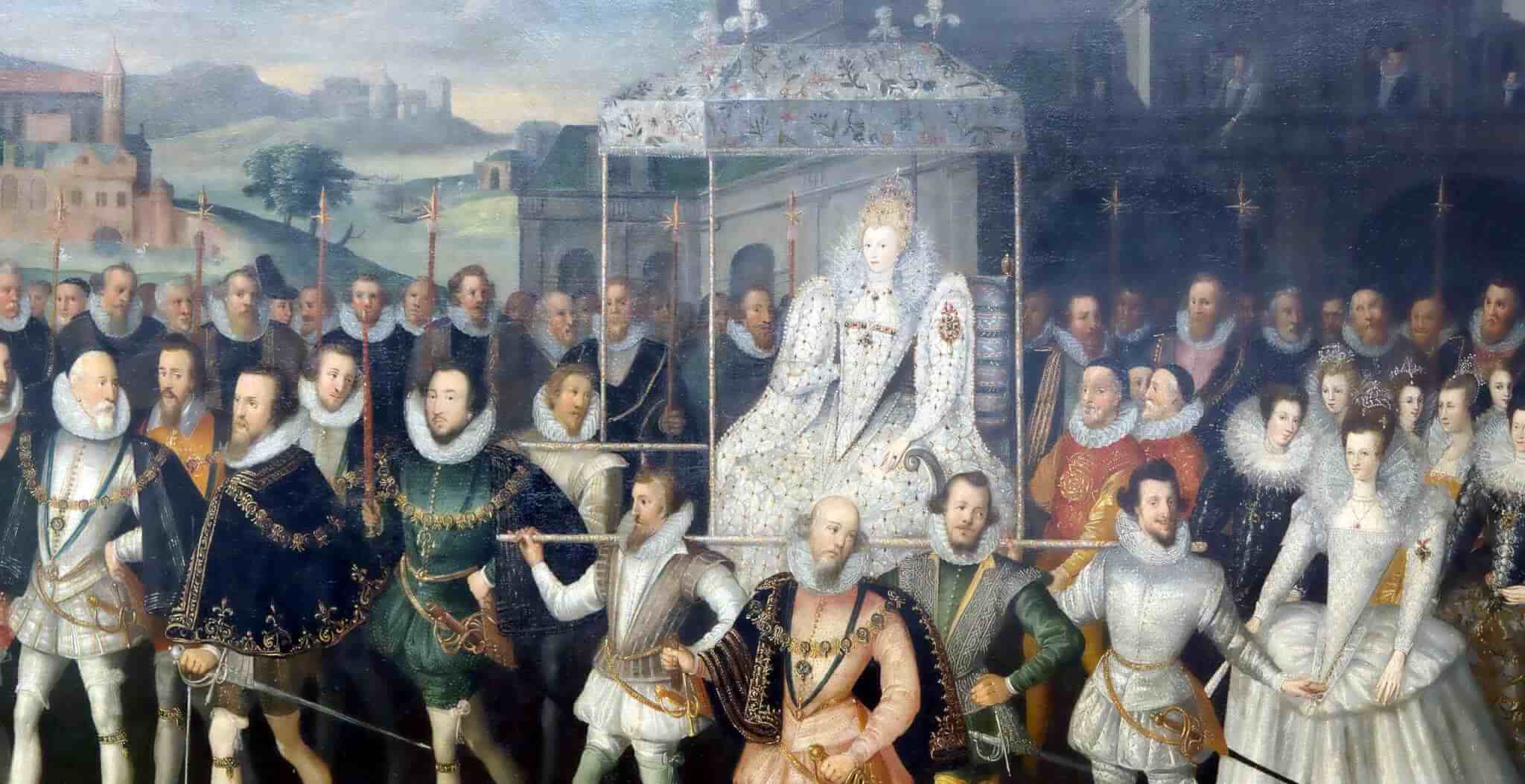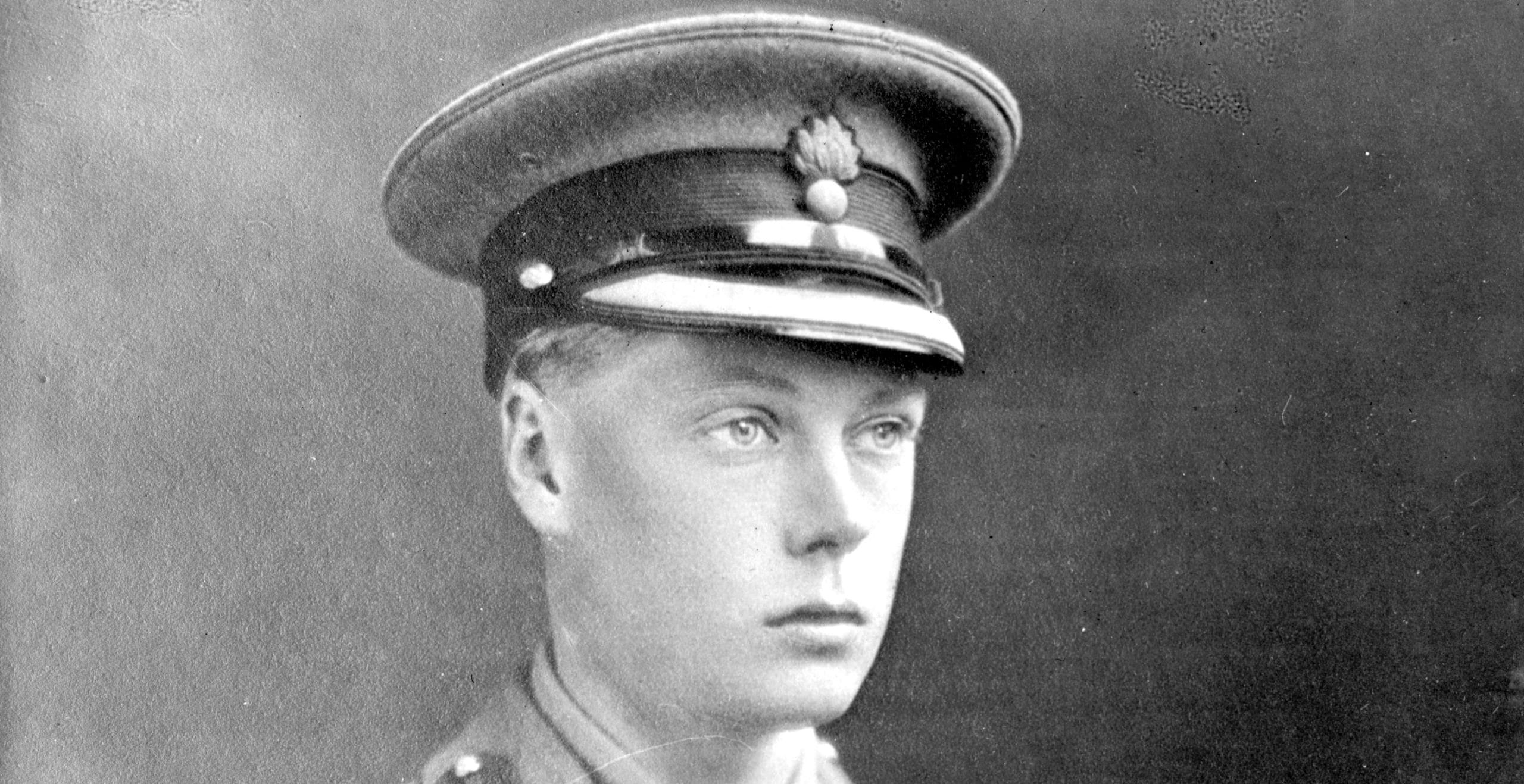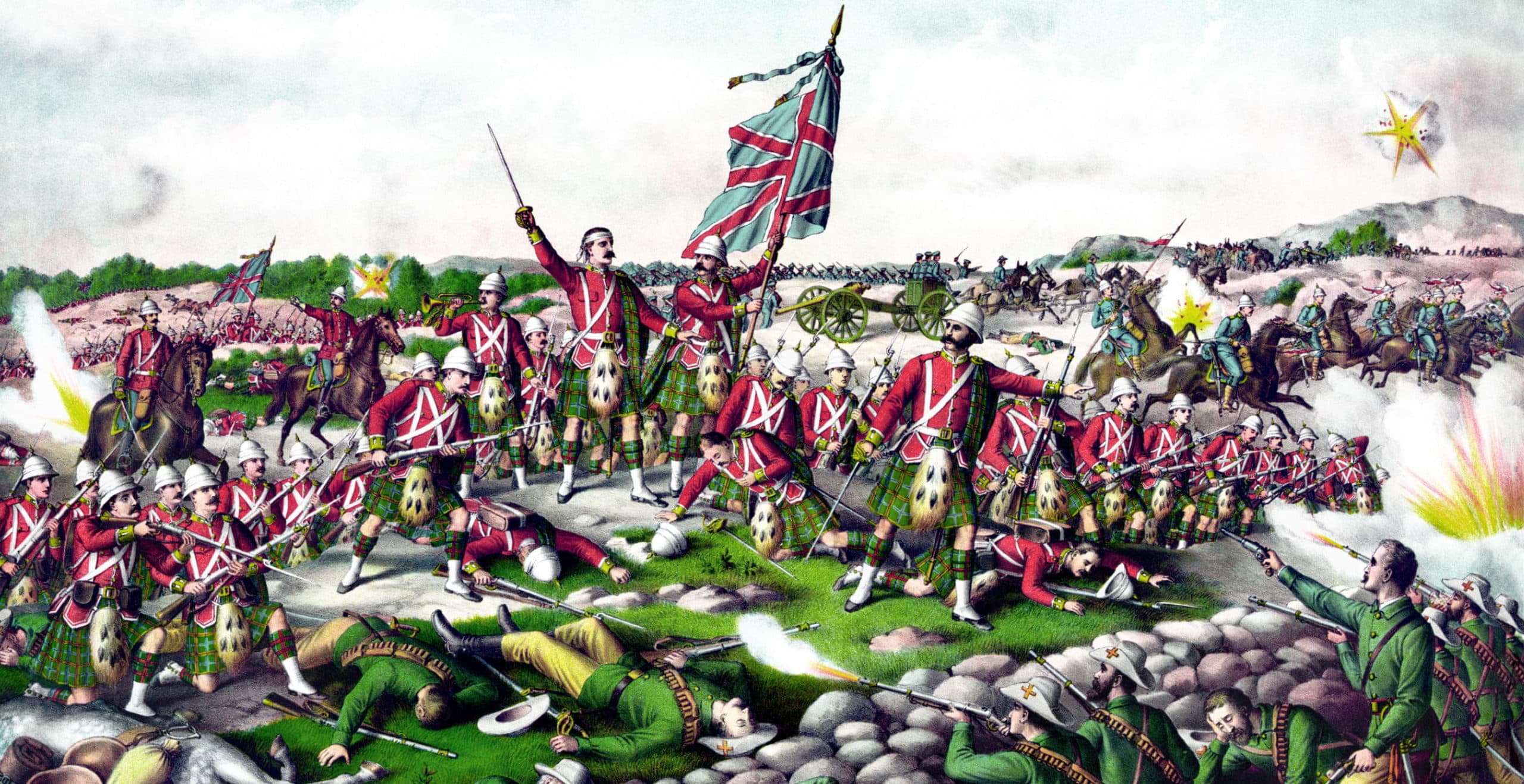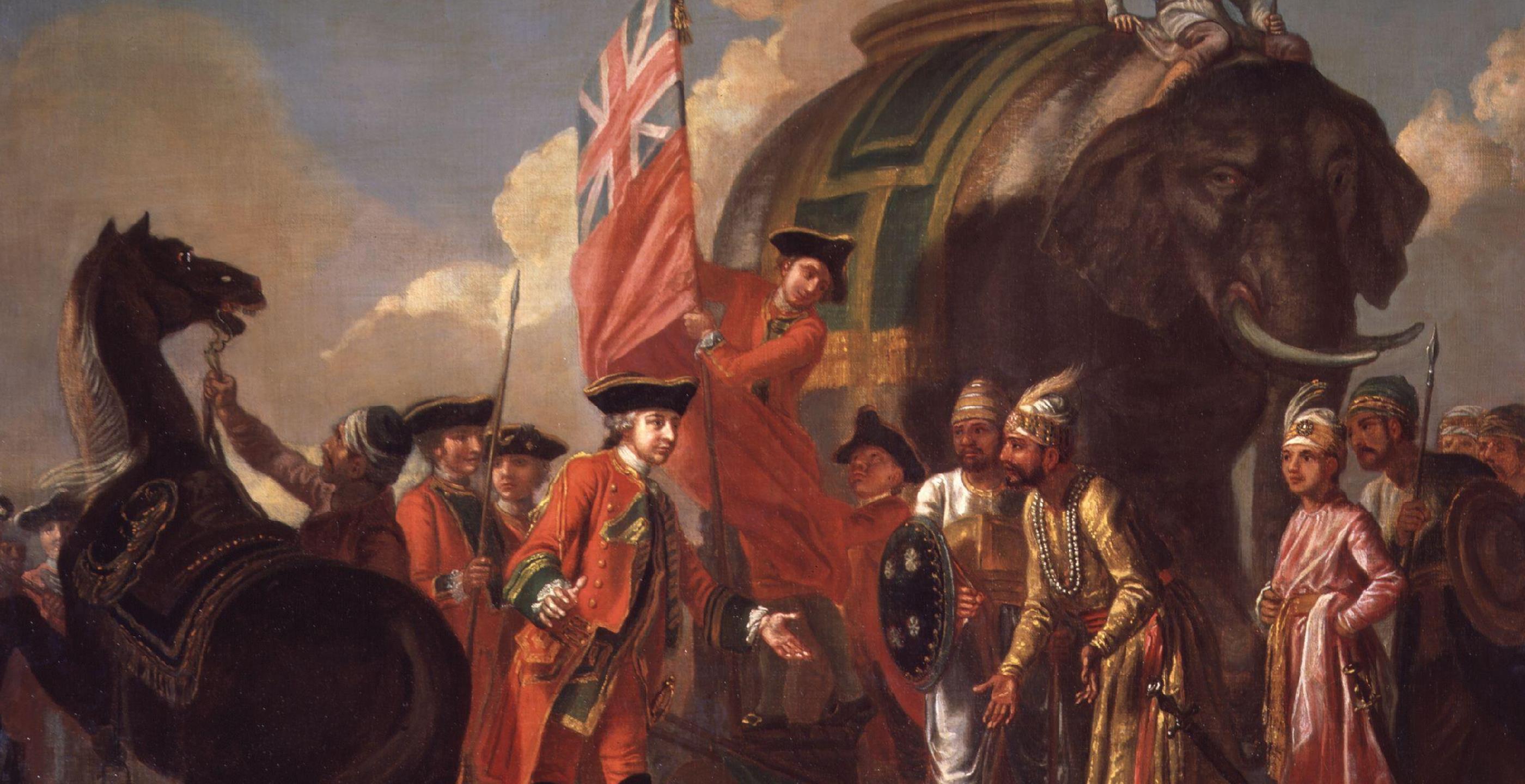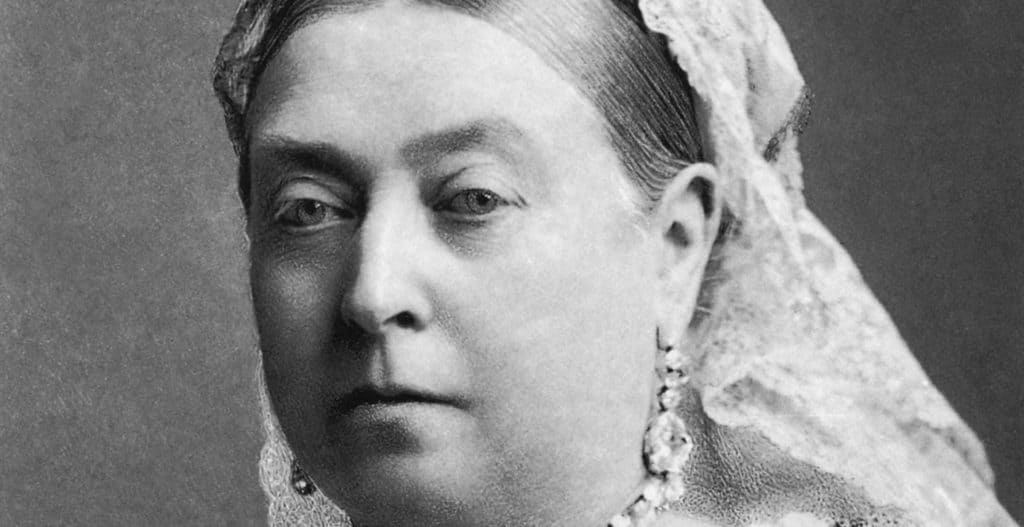“The Uncle of Europe” otherwise known as King Edward VII lived much of his life as a playboy, part of the high society crowd, never able to live up to exacting standards of his mother, Queen Victoria.
Born in November 1841 at Buckingham Palace, he was the eldest son of Victoria and Albert and heir to the throne. As a result, his parents felt it was imperative that he should receive a well-rounded and rigorous education.
In 1860 A successful four month tour of North America turned out to be a roaring success and his role as a roaming diplomat on behalf of Great Britain proved to be incredibly popular.
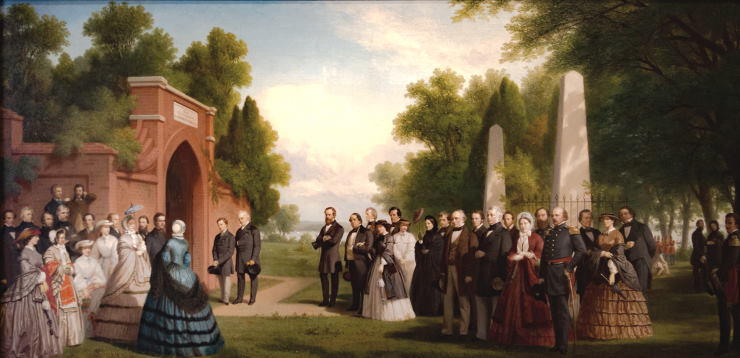
In 1861 Edward went up to Trinity College Cambridge to read history. Away from his parents domineering presence, he embraced both the academic and social side of student life, including dallying with an actress, Nellie Clifden. The same year Edward took a trip to Ireland to observe military manoeuvres. Whilst at the Curragh in Ireland, Nellie was smuggled into the prince’s tent by fellow officers causing great uproar and scandal. His playboy antics soured his relationship with his parents irrevocably. His father felt the need to visit his son in Cambridge to reprimand him for the incident. Not long afterwards, Albert’s failing health got the better of him and he passed away, leaving Queen Victoria enveloped by grief and quick to blame her son’s shameful behaviour.
After Cambridge, Edward expressed interest in joining the army but his mother flatly refused.
Victoria decided a favourable marriage for Edward might bring an end to his carefree bachelor days. Her choice was the popular Princess Alexandra of Denmark whom Edward met at Speyer. Their initial meetings and impressions of one another were favourable enough and the marriage plans were set in motion.
Before he married Alexandra however, Edward was to embark on another tour. He was now obliged to take up more roles as his mother had retired from public life. The extensive tour included many locations across the Middle East including Egypt, Damascus, Beirut, Constantinople and Jerusalem. This was an important visit on behalf of the British government to engage in cordial relations with Egypt’s ruler. Such a friendship, it was believed, might be enough to prevent the French takeover of the Suez Canal.
After fulfilling these diplomatic obligations, Edward returned to Britain. In March the following year he married Alexandra at St George’s Chapel at Windsor Castle.
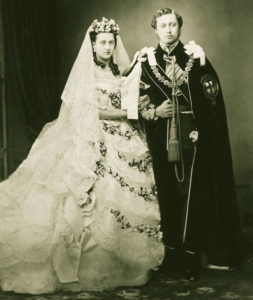
The royal couple then settled into their London residence, however the union was not universally popular, especially with Edward’s German relatives, due to the ongoing dispute between Germany and Denmark over Schleswig and Holstein.
The marriage itself produced six children. Their eldest, Prince Albert Victor was mentally handicapped and died early at the age of twenty-eight. Their younger son, George then became heir to the throne.
Edward would go on to have many mistresses during his marriage, apparently with little resistance from Alexandra herself. One such mistress was Alice Keppel, the ancestor of Camilla Parker Bowles, wife of the current Prince of Wales. Another was the ‘Jersey Lily’, actress Lily Langtry.
Meanwhile, in 1871, Edward had a brush with death, contracting typhoid, the same disease that had killed his father. Happily he made a full recovery.
Despite his dalliances and misdemeanours, he was able to cultivate friendships with a great array of people. With a reputation as a fashionable dresser, he also set many trends in male fashion. Known to be a lover of food, it was said that the habit of leaving the bottom button of a waistcoat undone was popularised by Edward whose burgeoning waistline could not be contained.
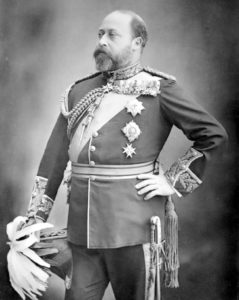
A high society gentleman with a penchant for luxury, he had a rapacious appetite leading to the consumption of four large meals a day, not to mention a large amount of cigars and cigarettes. The tradition of Yorkshire puddings and beef served with horseradish also supposedly originated with Edward as well.
His lifestyle was one of food, women, shooting, gambling and horse racing (leading to a few successes at the Derby as well as the Grand National).
Back to royal duties; in September 1875 he took another tour, this time to India. On his return, Queen Victoria was awarded the title ‘Empress of India’ by parliament.
During his time as prince and heir apparent, Edward continued to enjoy a full social life. However in 1891, such events led to great scandal as he found himself embroiled in the “Tranby Croft Scandal”.
In September 1890, at a house party at Tranby Croft, Yorkshire, Edward and friends partook in a game of baccarat in which a certain Sir William Gordon-Cumming, a Lieutenant Colonel, was accused of cheating.
Upon taking advice from royal courtiers and with the approval of Edward, Gordon-Cumming was forced to sign a document declaring he would not play again, whilst all the guests were sworn to secrecy.
This did not however remain a secret and Gordon-Cumming, whilst protesting his innocence, filed a writ for slander in February the following year. The case was then subsequently heard in court and Edward was forced to appear as a witness, something which had not occurred in the monarchy since 1411.
Whilst Gordon-Cumming lost the case and found himself a social pariah, the public had sided with Sir William which led to the prince’s declining popularity and a stain on his character.
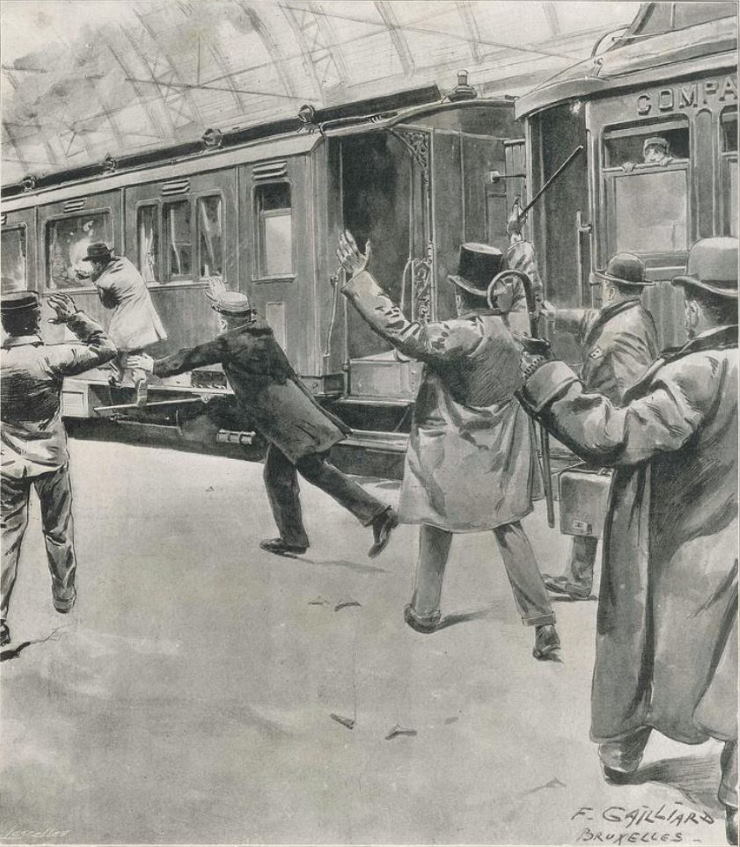
Edward’s difficulties were not over as he faced another challenge when a young Jean-Baptiste Sipido attempted to assassinate him in Belgium. The motivation for the attack was the ongoing Second Boer War which was causing further tensions between Britain and the continent.
On 22nd January 1901, Queen Victoria passed away, leaving Edward to inherit the throne. He faced a gargantuan task, escaping the shadow of his mother.
Crowned at Westminster Abbey in August, the fifty-nine-year-old king proved to be a very different monarch to his mother. His more affable nature meant he was more likeable and less austere than his mother. He would also learn to engage as king within the confines of the constitutional monarchy.
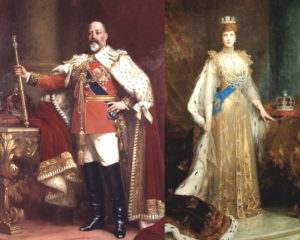
His likeability would serve him well, particularly with regards to foreign affairs, so much so that his no-nonsense and approachable style led the French to refer to him as “the uncle of Europe”.
He used this avuncular manner, as well as being fluent in French and German, to his advantage, forging important diplomatic alliances through his family connections and socialising on the continent. In 1903 he visited France as a guest of President Loubet and then went on to Rome in order to visit Pope Leo XIII. These visits would help to lay the foundations for the Entente Cordiale between France and Britain.
His diplomatic tentacles spread across Europe as he visited numerous countries. In June 1908, he was the first British monarch to visit the Russian Empire, helping to boost Anglo-Russian relations. The visit to Tsar Nicholas II helped to reinforce such ties.
Whilst he was happy to engage with his many family members scattered across Europe, strained relations with Wilhelm II, his nephew, did not bode well for the friction between Britain and Germany.
Back at home, Edward would remain invested in modernising Britain’s Home Fleet and reorganising the army after the Second Boer War. The navy would become a main topic of discussion for the king and his colleagues, particularly with the increasing threat from the Imperial German Navy.
Towards the end of his reign, parliamentary issues would cause problems for the king when in 1909, the House of Lords rejected the People’s Budget put forward by Asquith’s Liberal government.
Edward was not happy about the Liberal attacks on peers, however the topic of the Lords’ right to veto legislation would lead to a constitutional crisis that would not be resolved in Edward’s own lifetime.
Unfortunately, the 1910 general election, which largely rested on the issue, led to a hung parliament. In the king’s final months, Edward attempted to find a solution to this constitutional deadlock.
In the end, his lavish lifestyle had got the better of him and in the first few months of 1910, his health spiralled out of control, resulting in his death in May. On his deathbed, the Prince of Wales told him that his horse had won at Kempton Park. The king replied, “I am very glad”. These were his final words. The high society king was gone.
King Edward VII had left behind a surprising legacy, exceeding people’s expectations, including those of his own parents. An ambassador for his country, he served to promote Britain and forge friendships abroad – whilst not forgetting to enjoy himself along the way.
Jessica Brain is a freelance writer specialising in history. Based in Kent and a lover of all things historical.
Published: May 24th, 2021.
